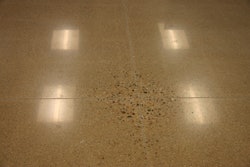
Auburn University student Philip McMichael is always busy, but not in an unsettling way. He wants to use his time to make an impact in the world, and at the heart of his college life is an excitement for discovery.
Since his freshman year, the junior from Miami has conducted research in the School of Forestry and Wildlife Sciences’ Forest Products Development Center in the Nanocellulose Lab, where, like in most labs, the projects are usually co-led by graduate students.
Yet at Auburn, McMichael is among many undergraduates diving into research — he is one of 600 students who submitted projects in this year’s Auburn Research Student Symposium, which has been converted to a virtual event due to the coronavirus quarantine. To further his work, McMichael recently applied for, and received, a two-semester Undergraduate Research Fellowship.
“Philip has engaged in research at the same strong pace as graduate students in my lab, and his diligent work has made him a highly respected, valuable team member,” says Soledad Peresin, assistant professor of forest biomaterials. “His stellar communication and problem-solving skills have also paid off with two internship offers this summer.”
McMichael conducts concrete research, literally.
“We are studying how to sustainably improve best management practices at job sites by treating concrete washwater and reducing the amount of contaminants leached to the soils,” says McMichael, who is majoring in sustainable biomaterials and packaging. “When concrete is poured and dries, it is washed down afterward. The water can drain into the groundwater table, so we want to adjust the water pH and remove contaminants.”
When contaminants enter groundwater, they change the water’s pH level, which is the measure of acid and base in water. This change to pH can harm animals and plants living in the water.
Current methods at construction sites involve above-ground containers or below-ground pits lined with plastic to collect the washwater. The EPA recommends this water be evaporated in place or treated at an offsite facility. However, the volume of washwater often makes it difficult for contractors to transport or allot sufficient space to store the washwater.
McMichael is working with Celeste Iglesias, an Auburn doctoral student and Presidential Fellow, to use cellulose — the primary component in wood — from pine trees to reduce the amount of solids in the slurries, draw out contaminants and neutralize the pH, with the idea that someday the research could lead to a better filtering containment system.
“When cellulose is reduced to nanoscale through a high-pressure process, it displays enhanced properties that allow it to have a wide range of possible applications,” McMichael says.
“We collect the washwater and add nanocellulose to flocculate the system, which causes the contaminants to bind together in a mass. By doing this, we can reduce the pH of the water and remove all kinds of contaminants, such as chlorine. Then the washwater can be disposed of properly.”
The young researchers’ project could not only benefit the environment, it could help the construction industry keep sites safe and help avoid costly fines that might be imposed if highly alkaline water runs into the groundwater.
“In recent years, state and local governments have begun cracking down on improperly disposed concrete washwater,” McMichael says.
The project is conducted under the supervision of Peresin in a joint effort with Paul Holley, professor and director of the Center for Construction Innovation and Collaboration in Auburn’s College of Architecture, Design and Construction, the academic unit which provided a seed grant to perform the work.
Representing a trend of undergraduate research at Auburn, the project is the continuation of work by former students Eric Lynn and Philip Street, who graduated in 2018 and 2019, respectively, from Auburn’s McWhorter School of Building Science.
“We have great student researchers at Auburn, both at the graduate and undergraduate levels,” Holley said.
A Flair for Outreach, Too
In addition to McMichael’s research, he and fellow undergraduate Autumn Reynolds co-founded the Sustainable Biomaterials and Packaging Society last fall, a student organization now with 12 members. “The society has received a lot of interest across campus from students in a variety of majors, such as design and chemical engineering, as well as other majors in forestry and wildlife sciences,” McMichael says.
“Philip and Autumn have been invaluable to our Sustainable Biomaterials and Packaging Program by creating this society that reaches out to students,” says Brian Via, Auburn’s Regions Bank Professor in the School of Forestry and Wildlife Sciences and director of the Forest Products Development Center. “They have put in countless hours organizing this exciting group of students, who in turn have benefited by receiving industry internships.”
McMichael is minoring in industrial and graphic design, which helps him apply eye-catching aspects to product packaging. “The shape of the package helps explain the product in a subtle, non-written way,” he said.
He also participated in the school’s first Forest, Environment and Wildlife Leadership Academy that traveled to Montgomery to meet with Alabama Gov. Kay Ivey and to Washington, D.C., to meet with Department of Energy officials. “These trips let us see how policies and theories are applied, and how they can make a substantial impact,” McMichael said.
For recreation, McMichael enjoys cycling and is president of the Auburn University Cycling Club that has 25 members and competes against other SEC schools. In February, the Auburn club hosted 200 racers from 13 clubs.
“We are very proud of that event,” he said. “It took a lot of work, but it let us showcase our great campus and surrounding area.”



















